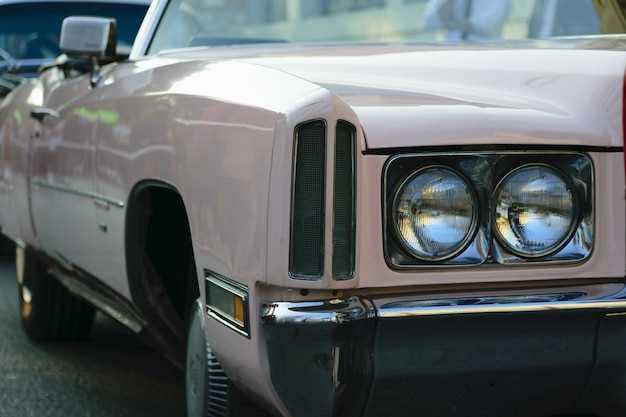
When it comes to transporting classic cars, ensuring their safety is of utmost importance. Classic cars are not just vehicles; they are cherished investments that require specialized care and protection during transit. One key aspect of this protection is securing the right insurance coverage tailored specifically for classic vehicles.
Understanding the different insurance options available for classic car transport is essential for every car owner. Standard auto policies often fall short when it comes to providing adequate coverage for high-value vintage cars. Therefore, it’s crucial to explore specialized classic car transport insurance options that cater to the unique needs of these vehicles.
In this article, we will delve into various types of insurance options available for classic car transport, helping owners make informed decisions that align with their transportation needs. From assessing the value of your car to understanding the specifics of coverage for damage or loss during transport, we will guide you through the complexities of classic car transport insurance.
Understanding Coverage Types for Classic Car Transport

When transporting a classic car, choosing the right insurance coverage is crucial for protecting your investment. Several types of coverage options are available, each catering to specific needs and scenarios.
Liability Coverage is a fundamental type of insurance that protects you against damages caused to other parties in the event of an accident during transport. This type of coverage typically includes bodily injury and property damage, ensuring that you are financially protected if the transport driver is at fault.
Physical Damage Coverage offers protection for your classic car against risks like theft, vandalism, and accidents while in transit. This coverage can be divided into two main types: collision and comprehensive. Collision coverage helps pay for damages to your vehicle from a transport-related accident, while comprehensive coverage covers other incidents such as theft or natural disasters.
Agreed Value Coverage is particularly important for classic cars. This type of insurance ensures that the value of your vehicle is agreed upon beforehand, providing you with full compensation in the event of a total loss. This avoids the depreciation issues often found in standard auto insurance policies.
In-Transit Coverage is another option that specifically covers the period when a classic car is being transported. This coverage protects against damages or losses that might occur during loading, unloading, or transit, ensuring that your classic car remains protected throughout the entire shipping process.
Finally, Custom Parts and Accessories Coverage is essential for classic car owners who have invested in modifications and enhancements. This coverage ensures that any aftermarket parts are also considered in the case of a claim, as standard policies may not include these components.
Understanding these coverage types will help you make informed decisions about insuring your classic car during transport. It’s essential to evaluate your specific needs and consult with an insurance expert to select the best policy that aligns with your requirements.
Evaluating Costs and Premiums for Classic Car Transport Insurance
When considering classic car transport insurance, understanding the costs and premiums associated with coverage is crucial. Various factors influence the pricing of insurance for classic cars, which can differ significantly from standard vehicle policies.
Vehicle Value: The market value of the classic car plays a substantial role in determining the insurance premium. Higher valued vehicles typically result in elevated premiums due to the increased risk for insurers. It’s essential to obtain a professional appraisal to establish an accurate market value, ensuring both adequate coverage and fair premium pricing.
Coverage Type: The level of coverage selected directly impacts the cost of the premium. Comprehensive policies that offer full replacement value tend to be more expensive than basic liability coverage. Evaluating the necessary level of protection based on the car’s value and condition is vital in balancing cost and coverage.
Transportation Method: The method of transport also influences costs. Open transport tends to be less expensive than enclosed transport options, but it exposes the car to potential damage from external elements. If a classic car is transported using specialized vehicles, this may result in higher premiums. Assess the car’s vulnerability and choose the transport method wisely to optimize insurance costs.
Storage and Usage: Where and how the car is stored can affect premiums as well. Cars that are stored in secure, climate-controlled environments are at lower risk for damage and theft, potentially leading to reduced insurance costs. Additionally, limited usage or mileage protection can lower premiums significantly. By minimizing exposure, car owners can take advantage of lower rates.
Insurance Provider: Different insurance companies offer various rates and families of policies. It’s advisable to shop around and compare quotes from multiple providers. Some insurers specialize in classic car coverage, potentially offering better protection and lower premiums. Make sure to read Policy reviews and assess the reputability of the insurance carrier before making a decision.
Ultimately, evaluating costs and premiums for classic car transport insurance requires careful consideration of multiple factors. Maintaining a balance between adequate coverage and affordability is essential for protecting your valuable asset.
Claim Process Steps for Classic Car Transport Incidents

When a classic car is involved in a transport incident, following a structured claims process is essential to ensure the vehicle owner receives due compensation. Here are the key steps to navigate this process effectively.
1. Document the Incident: Immediately after the incident, gather all relevant information. Take photographs of the damage to the car and transport vehicle, note the time and location, and collect contact details of witnesses. This documentation will be crucial for your claim.
2. Notify Your Insurer: Contact your insurance provider as soon as possible. Provide them with the details of the incident, including any information you have documented. Most companies have a timeline for reporting claims, so prompt notification is vital.
3. Complete the Claim Form: Your insurer will provide a claim form that needs to be filled out accurately. Be thorough and clear when describing the incident, the extent of the damage, and any other pertinent details. Ensure you keep a copy for your records.
4. Submit Supporting Documentation: Along with the claim form, submit all supporting documents, such as the incident report, photographs, and any witness statements. This additional evidence will strengthen your claim and assist the insurer in their evaluation.
5. Follow Up: After submitting your claim, maintain communication with your insurer. Follow up periodically to check the status of your claim and provide any additional information they may request during their investigation.
6. Assessment of the Claim: The insurance company will review the submitted documentation and may send an adjuster to assess the damage. Be available to answer questions and provide further information if needed.
7. Receive the Outcome: Once the insurer completes their assessment, they will inform you of the outcome. If your claim is approved, they will provide details on the compensation amount and the subsequent steps for repair or reimbursement.
8. Appeals Process: If your claim is denied or you disagree with the compensation amount, inquire about the appeals process. Most insurers have a formal procedure in place for disputes, allowing you to present your case for reconsideration.
By understanding and following these steps, classic car owners can navigate the claim process more efficiently following transport incidents. Timely actions and organized documentation play a crucial role in achieving a successful outcome.


